To achieve a greener world, every square foot of grass matters, therefore our lawns represent more than simply outside space. From sprawling city parks to little backyards, every patch of grass may serve as a haven for wildlife and an example of eco-friendly practices.
This article will explore the many ways in which we may improve the environment by transforming our lawns into attractive and functional green areas. We’ll look at a number of techniques and methods that may help us have greener (in more ways than one) lawns.
Choosing Native Plants
The selection of plants is essential in the pursuit of an environmentally friendly lawn. Although traditional lawn grasses provide an attractive, green surface, they may be quite resource-intensive due to their frequent need for water, fertilizer, and upkeep. More significantly, they seldom help native animals or increase biodiversity in the area.
Native plants are a more eco-friendly option. These plants are adapted to your temperature and soil, so they need less maintenance from you. Additionally, they provide essential food and shelter for native animals.
Native grasses in North America, such as Buffalo Grass and Blue Grama, may be used to produce aesthetically pleasing and low-maintenance lawns.
Using Organic Fertilizers
Another problem with conventional lawns is the usage of chemical fertilizers. These compounds may improve the health and look of a lawn but at a tremendous cost to the environment. Chemical fertilizer runoff poses a threat to aquatic life and environmental stability.
Consider using compost, manure, or worm castings as organic fertilizers instead. These organic options provide valuable nutrients to the soil, which in turn promotes the growth of a lush, green lawn.
In addition, they strengthen the soil, making it better able to hold water and promote plant development, which results in a lawn that is more resistant to pests and diseases.
Practicing Water Conservation
In order to maintain an environmentally friendly lawn, water conservation is crucial. In arid regions or during the summer, traditional lawns might use an excessive quantity of water. A healthy lawn may be maintained while using much less water if proper irrigation techniques are used.
In order to maximize water absorption by the soil, it is best to water in the early morning, when evaporation is at a minimum. Heroes Lawn Care efficient soaker hoses and drip irrigation systems get water right to the roots of your plants without wasting any on the way. In addition, capturing rainwater and reusing it for irrigation is a fantastic method to put that water to good use.
Implementing Integrated Pest Management
The presence of pests may greatly complicate efforts to keep a lawn in good condition. Chemical pesticides may work in the near term, but they often have unintended consequences for wildlife and the ecosystem. Integrated pest control (IPM) may be used instead of these hazardous products.
Integrated Pest Management (IPM) is a multi-pronged strategy for eradicating pests. Biological pesticides, the creation of habitats for natural predators, and the introduction of beneficial insects that feed on pests are all examples of this.
Ladybugs and spiders, for instance, prey on a wide variety of plant pests. A healthy lawn environment may be preserved by fostering the presence of these beneficial species.
Encouraging Wildlife
A sustainable lawn actively encourages biodiversity. Your yard may become a little piece of nature by providing homes for birds, insects, and other critters. This not only makes your outdoor space more attractive and vibrant, but it also helps the local ecosystem.
To attract wildlife, you may put up birdhouses, dig a pond, or just leave heaps of leaves or logs. To encourage the presence of beneficial insects like bees and butterflies, you might cultivate a variety of blooming plants. With just a little effort on your part, you can turn your lawn into a thriving habitat for a variety of animals.
Reducing Lawn Size
When it comes to grassy areas, more isn’t necessarily better. More water and more pollutants from lawnmowers are two unintended consequences of a larger lawn. Shrink your grass if you’re worried about this becoming a problem.
Swap out part of your grass for flower beds, vegetable plots, or perhaps a little forest or wildflower meadow. This not only reduces the time and effort required to care for a large lawn, but it also offers a number of other advantages.
Planting flower beds and meadows in addition to vegetable gardens may increase biodiversity in the area while providing fresh vegetables for your table.
Adopting Sustainable Lawn Care Practices
Finally, how you care for your lawn can have a significant impact on its environmental footprint. Simple changes to your lawn care routine can make a big difference. This could involve mowing less frequently to allow grass to grow longer and develop deeper roots, which improves soil stability and water retention.
Consider leaving grass clippings on the lawn after mowing. These clippings decompose and provide a natural source of fertilizer, reducing the need for additional products. Switching to electric or manual mowers instead of gas-powered ones can also help to reduce air pollution.
Conclusion
The path to a healthier, more resilient lawn is one of constant discovery and adjustment. It’s important to consider both the aesthetics of our outdoor areas and the demands of the natural world around us. Each lawn that is maintained using eco-friendly methods is one more step toward a more sustainable future.
We get closer to a life in harmony with nature with each native plant we plant, each drop of water we save, and each critter we invite into our yards. Let’s rise to the occasion and transform our grass into healthy, green landscapes that benefit not only us, but also the Earth we call home.



